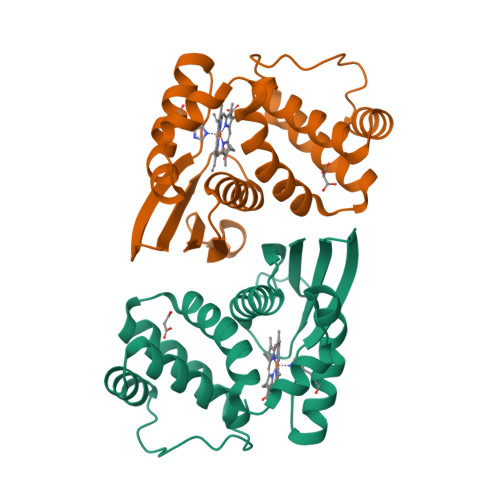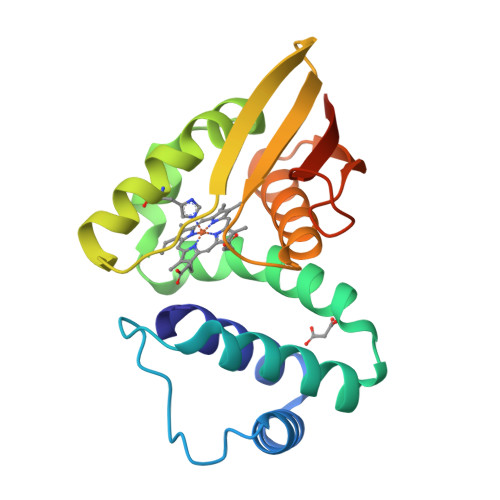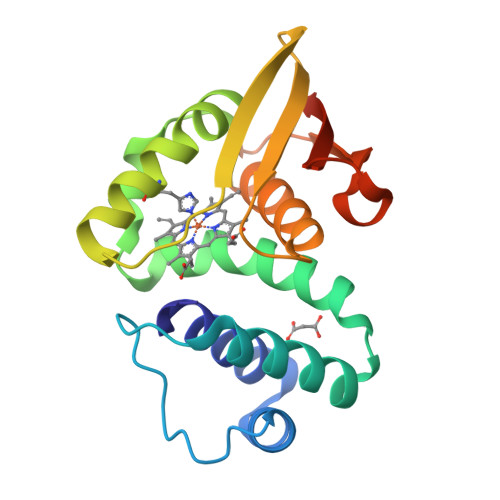Tunnels modulate ligand flux in a heme nitric oxide/oxygen binding (H-NOX) domain.
Winter, M.B., Herzik, M.A., Kuriyan, J., Marletta, M.A.(2011) Proc Natl Acad Sci U S A 108: E881-E889
- PubMed: 21997213
- DOI: https://doi.org/10.1073/pnas.1114038108
- Primary Citation of Related Structures:
3TF0, 3TF1, 3TF8, 3TF9, 3TFA, 3TFD, 3TFE, 3TFF, 3TFG - PubMed Abstract:
Interior topological features, such as pockets and channels, have evolved in proteins to regulate biological functions by facilitating the diffusion of biomolecules. Decades of research using the globins as model heme proteins have clearly highlighted the importance of gas pockets around the heme in controlling the capture and release of O(2). However, much less is known about how ligand migration contributes to the diverse functions of other heme protein scaffolds. Heme nitric oxide/oxygen binding (H-NOX) domains are a conserved family of gas-sensing heme proteins with a divergent fold that are critical to numerous signaling pathways. Utilizing X-ray crystallography with xenon, a tunnel network has been shown to serve as a molecular pathway for ligand diffusion. Structure-guided mutagenesis results show that the tunnels have unexpected effects on gas-sensing properties in H-NOX domains. The findings provide insights on how the flux of biomolecules through protein scaffolds modulates protein chemistry.
Organizational Affiliation:
Department of Chemistry, California Institute for Quantitative Biosciences, University of California, Berkeley, CA 94720, USA.



















